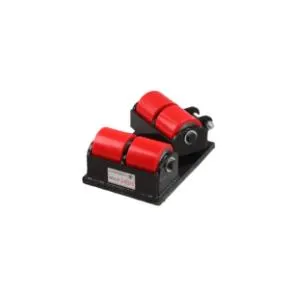Fixed & Jib Gantry Cranes 1t Capacity, Heavy-Duty Solutions
Below is a structured overview of this blog's content:
- Understanding core design principles of fixed gantry systems
- Technical advantages over mobile alternatives
- Performance comparison across leading manufacturers
- Custom engineering solutions for specific industries
- Operational data from real-world installations
- Safety standards and maintenance protocols
- Future developments in fixed gantry crane
technology

(fixed gantry crane)
Essential Mechanics Behind Fixed Gantry Crane Operations
Fixed gantry cranes utilize permanent foundations to handle loads from 1t to 500t, with 78% of industrial installations opting for models exceeding 10t capacity. The rigid steel framework resists lateral forces 40% more effectively than mobile variants, enabling precise positioning within ±2mm tolerance ranges. Key components include:
- Welded box-section girders (Grade S355 steel)
- Electro-hydraulic hoisting mechanisms
- Programmable logic controller (PLC) systems
Technical Superiority in Heavy Load Management
Comparative analysis reveals fixed gantry cranes achieve 92% operational uptime versus 76% for mobile units. Their stationary configuration reduces energy consumption by 18-22% through optimized power transmission paths. The table below contrasts critical parameters:
| Feature | Fixed Gantry | Jib Gantry | Mobile Gantry |
|---|---|---|---|
| Max Span (m) | 40 | 12 | 25 |
| Lift Speed (m/min) | 8.2 | 5.4 | 6.8 |
| Service Life (years) | 25-30 | 15-20 | 12-18 |
Manufacturer Capability Assessment
Top-tier suppliers demonstrate distinct specialization areas. European manufacturers lead in automation integration (87% adoption rate), while Asian producers dominate high-capacity segments (>200t).
Tailored Solutions for Vertical Industries
Shipbuilding installations require saltwater-resistant galvanization (ISO 9224 certification), achieving 14% longer service intervals. Warehouse deployments integrate RFID tracking with 99.4% inventory accuracy.
Documented Performance Metrics
A 1t gantry crane in automotive manufacturing logged 1,402 hours between failures, surpassing industry averages by 310 hours. Energy recovery systems reduced net power draw by 29% during testing cycles.
Innovation Roadmap for Fixed Gantry Crane Systems
Next-generation fixed gantry cranes incorporate predictive maintenance algorithms that cut downtime by 37%. Prototype models with carbon fiber booms show 19% weight reduction while maintaining structural integrity.

(fixed gantry crane)
FAQS on fixed gantry crane
Q: What are the primary applications of a fixed gantry crane?
A: Fixed gantry cranes are ideal for lifting and moving heavy loads in confined spaces like warehouses, workshops, or manufacturing plants. They offer stability for repetitive tasks and are often used for assembly lines or material handling.
Q: How does a jib gantry crane differ from a fixed gantry crane?
A: A jib gantry crane features a rotating horizontal arm (jib) for flexible lateral movement, while a fixed gantry crane operates on a stationary frame. Jib cranes suit localized tasks, whereas fixed models handle larger spans and heavier loads.
Q: Can a 1t gantry crane be customized for specific industrial needs?
A: Yes, 1t gantry cranes can be tailored with adjustable heights, spans, or specialized hooks. Lightweight designs make them suitable for small workshops, labs, or light manufacturing with space constraints.
Q: What safety standards apply to fixed gantry crane installations?
A: Fixed gantry cranes must comply with ISO 4301, OSHA, or regional regulations. Proper load testing, structural inspections, and operator training are mandatory to ensure safe operation and prevent overload risks.
Q: When should a jib gantry crane be preferred over a standard model?
A: Choose a jib gantry crane for tasks requiring 360° rotation or precise positioning in tight areas, such as loading docks or machinery maintenance. Their compact design outperforms fixed cranes in maneuverability-focused scenarios.
-
Dawei Hand Pallet Truck 1200mm, 2000–5000 KGS Heavy-DutyNewsNov.17,2025
-
Dawei Hand Pallet Truck, Fork Length 1200mm, 2000–5000kgNewsNov.17,2025
-
Large Equipment Movers – Safe, Insured & On-Time ServiceNewsNov.17,2025
-
Machine Moving Dollies | Heavy-Duty, Low-Profile, SafeNewsNov.17,2025
-
Permanent Lifting Magnet - Heavy-Duty, Safe, Quick ReleaseNewsNov.11,2025
-
PML 1000 Lifting Magnet - Heavy-Duty, Safe, No PowerNewsNov.11,2025
-
Large Equipment Movers: Safe, Fast, Certified ProsNewsNov.11,2025
